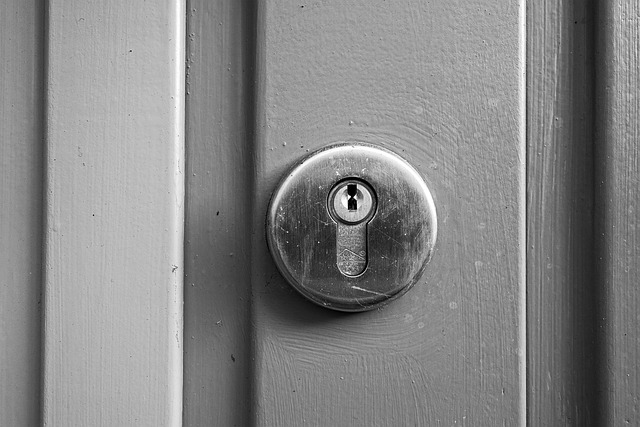Wireless security solutions like solar-powered alarm systems and long-range cameras are transforming remote home protection. These innovative technologies, including motion sensors and real-time footage, enable efficient monitoring of vast landscapes with limited infrastructure. Smart integration enhances response times, offering comprehensive security for rural living, where traditional measures often fall short. Solar-powered wireless systems provide sustainable, advanced protection for remote properties, addressing unique challenges while minimizing environmental impact.
In today’s digital era, ensuring secure and safe remote homes has never been more critical. For isolated residences, implementing robust security measures can be challenging due to geographical constraints. This article explores the integration of innovative smart home features with wireless technology, focusing on solutions for rural areas. We delve into the benefits of solar-powered setups, long-range cameras, motion sensors, and wireless alarms, enhancing remote property safety while promoting a green approach.
- Understanding the Challenges of Remote Home Security
- The Role of Wireless Technology in Remote Areas
- Solar-Powered Solutions: A Green Approach to Security
- Smart Home Features for Enhanced Remote Property Safety
Understanding the Challenges of Remote Home Security

In remote areas, securing a home presents unique challenges due to their often isolated and vast landscapes. Traditional security measures might not be feasible or effective for these regions, making wireless security for remote homes an attractive solution. Rural areas frequently face limited infrastructure, with poor internet connectivity and distant emergency services, which complicates the implementation of conventional remote home security systems.
Wireless alarm systems for rural areas, powered by renewable energy like solar, offer a sustainable option. Long-range wireless cameras and motion sensors can be strategically placed to monitor activity, providing homeowners in remote locations with peace of mind. Smart home security integration allows them to access real-time footage and alerts, enabling swift responses to potential threats, even when they’re away from their properties.
The Role of Wireless Technology in Remote Areas

In remote areas with limited infrastructure, wireless technology plays a pivotal role in bridging connectivity gaps and enhancing security measures. The adoption of wireless security for remote homes has become increasingly popular due to its ability to provide robust solutions for regions that are often overlooked by traditional wired systems. These areas, whether rural or sparsely populated, can benefit from advanced home security systems that use wireless alarm systems and long-range wireless cameras. Such technologies enable homeowners to monitor their properties remotely, ensuring peace of mind even when they’re far from home.
Solar-powered wireless security systems offer a sustainable and efficient alternative for remote locations. By harnessing renewable energy, these systems can operate independently without the need for grid electricity, making them ideal for areas with limited or no power access. Moreover, motion sensors for remote homes are valuable tools in detecting unauthorized entries or movements, allowing property owners to take immediate action using their smart home security devices from anywhere in the world.
Solar-Powered Solutions: A Green Approach to Security

In remote areas where traditional power grids are absent or unreliable, securing homes can be a significant challenge. Wireless security solutions offer a promising alternative for residents looking to safeguard their properties. One environmentally friendly and sustainable approach is through solar-powered wireless security systems. These innovative setups harness the power of the sun, eliminating the need for intrusive wiring and reducing carbon footprints. With long-range wireless cameras and motion sensors integrated into these smart home security systems, homeowners in rural areas can monitor their surroundings effectively.
By utilizing solar energy, remote homes can achieve a robust security presence without contributing to environmental degradation. Wireless alarm systems designed for rural settings provide peace of mind, ensuring that any suspicious activity is promptly detected and notified to authorities. This technology bridges the gap between effective home security and the unique challenges faced by those living in off-grid communities.
Smart Home Features for Enhanced Remote Property Safety

For many residents in remote areas, ensuring the safety of their properties can be a constant concern due to limited physical security measures and distances from immediate help. However, integrating smart home features offers an innovative solution, transforming rural abodes into fortified fortresses. Wireless security for remote homes has evolved significantly, incorporating advanced systems like solar-powered wireless security devices that not only provide 24/7 monitoring but also minimize environmental impact.
Long-range wireless cameras and motion sensors for remote homes are becoming indispensable tools in this context. These smart home security solutions enable homeowners to keep a constant eye on their properties from afar, detecting any unusual activity through real-time alerts. This technology, especially in rural areas where response times can be longer, offers peace of mind and the ability to take proactive measures to protect one’s remote property.
The integration of smart home features offers a comprehensive solution to the unique challenges faced by remote areas. By leveraging wireless technology and sustainable energy sources like solar power, residents can now enjoy advanced remote home security systems. These innovations, including long-range wireless cameras, motion sensors, and solar-powered wireless security setups, ensure rural properties are protected with minimal environmental impact. Adopting these technologies not only enhances safety but also empowers individuals to monitor their remote homes remotely, promoting peace of mind in even the most isolated locations.
